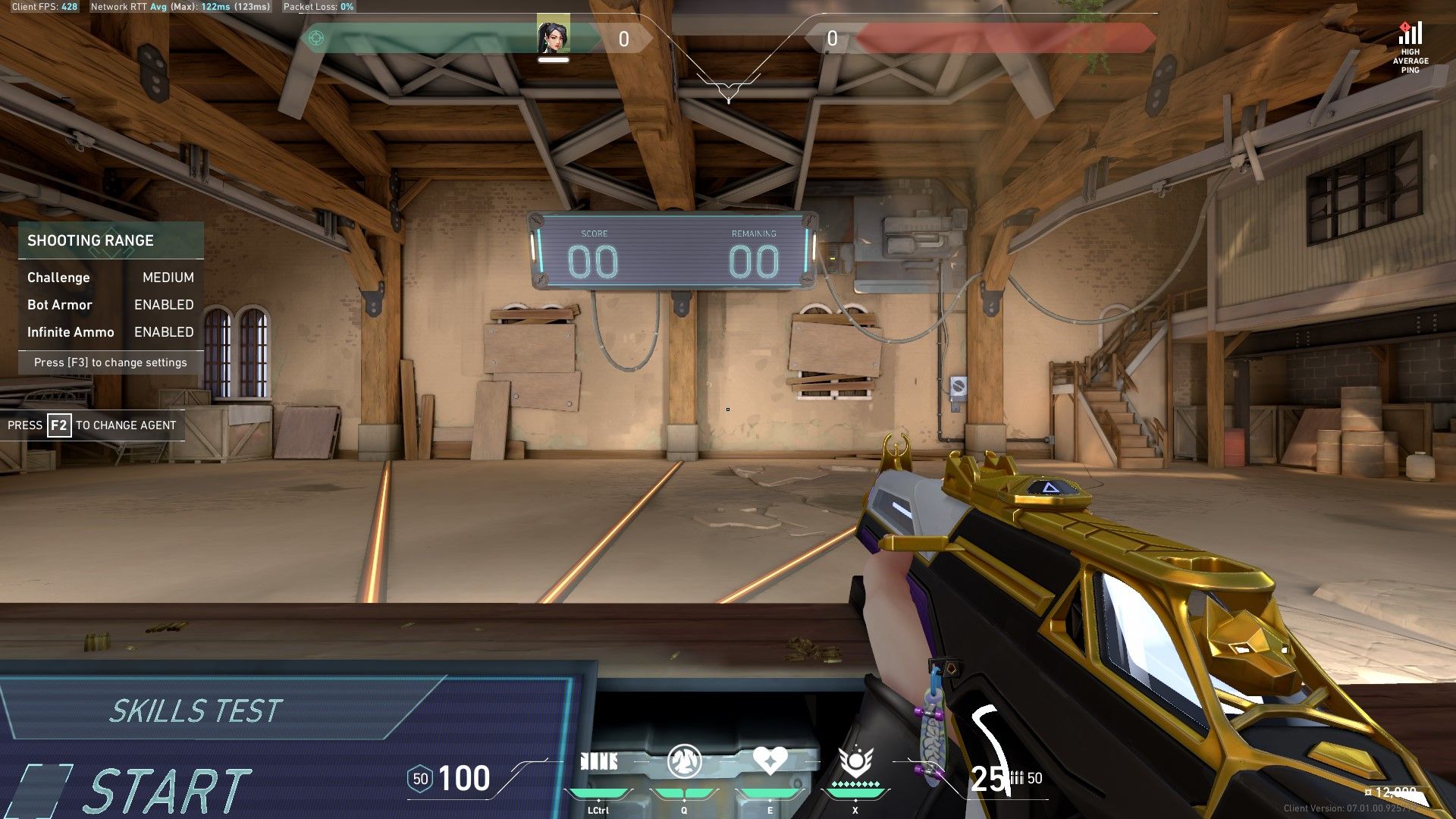
Fine-Tuning Your Gameplay: Choosing Mouse Sensitivity

Fine-Tuning Your Gameplay: Choosing Mouse Sensitivity
Speed and precision are two core functions of aiming in first-person shooters. Both attributes are expressed dynamically by mouse sensitivity. As such, one typically has to sacrifice precision for speed and vice versa when choosing a suitable mouse sensitivity.
It makes you wonder what the right sensitivity is for FPS titles. Fortunately, we’ll discuss how certain mouse sensitivity settings will impact your aim and ultimately help you find the right sensitivity to take your game to the next level.
Disclaimer: This post includes affiliate links
If you click on a link and make a purchase, I may receive a commission at no extra cost to you.
Factors to Consider When Choosing Mouse Sensitivity
Your mouse sensitivity is one of a fewimportant settings to customize before starting a new FPS game because it can directly impact your performance. As such, a few essential things must be considered when choosing the appropriate sensitivity for any FPS title.
1. Speed

Aiming speed often describes how swiftly your crosshair moves in the game. It directly impacts how flicky your aim is and could take varying effort depending on your sensitivity setting. Dialing up the sensitivity value in your game will make your crosshair feel swifter, which could be a good advantage in games with hard-to-follow movement.
A good example of this is Apex Legends. The average mouse sensitivity setting in Apex Legends is higher than in other FPS titles. This is because players can track and flick to quickly-moving targets with a higher sensitivity.
However, it is worth knowing that increasing your sensitivity gives you a speed boost at the cost of precision. Aiming with a mouse mostly boils down to muscle memory. As such, you will certainly over aim and miss some of your shots when switching from a lower to a higher sensitivity.
This is because your arm is used to exerting a little more effort than is required when using high sensitivity.
Fortunately, you can overcome this hiccup by playing with your new sensitivity more. Speed is helpful in fast-paced games, but you won’t get the full benefit of having a faster aim if you aren’t consistent with it.
2. Accuracy

Accuracy and control go hand in hand in first-person shooters. Controlling your crosshair with a lower sensitivity is easier because it doesn’t move as swiftly. As such, it is easier to be accurate with lower mouse sensitivities.
A player sacrifices speed for accuracy after lowering their mouse sensitivity. However, like raising your sensitivity, it will take some adjusting before you reap the benefits. A lower mouse sensitivity requires more effort on your arm and will require fresh muscle memory.
To this end, it’s best to hop into an aim trainer or the training range in your game of choice to condition your arm and wrist to work with your new mouse sensitivity.
An excellent example of a game that benefits from accuracy and lower sensitivity is Counter-Strike: Global Offensive. Movement in this game is easier to track, and it pays more to hit your shots at the first opportunity you are given.
3. Effective Dots Per Inch
There are two sides to your mouse sensitivity as far as first-person shooters are concerned. You need to be aware of both your mouse sensitivity, or DPI, and your in-game sensitivity. These two come together to form a measure known as an effective DPI.
Effective DPI is calculated by multiplying your in-game sensitivity by your DPI. For instance, 0.25 in-game sensitivity played at 1000 DPI gives an EDPI of 250. But why is effective DPI so important? Let’s paint a scenario.
Your favorite pro might be playing with a different mouse DPI setting than you. With the knowledge of effective DPI, you don’t have to shift your DPI setting to match theirs—as some mouse models may have limited DPI ranges.
Instead, you can create a relative sensitivity by increasing or reducing your in-game sensitivity so your effective DPI matches theirs. This way, you’ll have the same effective DPI even if your mouse’s DPI differs.
With this knowledge, you can easily replicate your favorite player’s sensitivity and then tweak it until it feels comfortable.
4. Wrist vs. Arm Aiming

There are two schools of mouse aim, namely wrist and arm aiming. Wrist aiming involves planting your hand in one position and using the swivel of your wrist for everything from flicking to tracking and micro-adjustments.
This form of aiming requires a higher in-game sensitivity to pull off effectively. As such, not using the correct value could force you to lift and drop your mouse more than is necessary.
Arm aiming, on the other hand, engages the shoulders, elbow, and wrist while aiming. It requires more effort and movement but works great with lower sensitivity and is generally considered more accurate.
The number of joints and muscles used in arm aiming is one strong argument used when acontroller vs. keyboard and mouse debate is brought up.
Both forms of aiming are viable, and your style choice depends entirely on your preferences. However, it is worth noting that lower sensitivity and wrist aiming are a complex combination that could significantly reduce your performance.
5. Mousepad

Choosing a proper mousepad is as crucial as choosing a suitable mouse sensitivity. Mousepads have different textures that interact differently with your mouse. A mousepad may provide a smoother glide, making your crosshair feel like it is moving faster than your sensitivity.
On the flip side, a mousepad with a rougher texture may restrict mouse movement and give you more control while playing. You must adjust your in-game sensitivity appropriately to compensate for either of these effects.
How? You can reduce your sensitivity with a smoother mousepad and increase it with a rougher one until your aim feels comfortable.
In addition, try to use the same mousepad whenever you play for the sake of consistency. Playing with your sensitivity settings too frequently will mess with your muscle memory and negatively affect your aim.
Mouse Sensitivity in Popular First-Person Shooter Genres
Finding the best mouse sensitivity setting for your game of choice can be tedious. So, here’s a small guide you can use to simplify the process for popular FPS genres.
1. Hero Shooters

Hero shooters are a popular genre that contains a vibrant cast of characters for you to play as. Each character may have a different playstyle and thus require a different type of aim from another.
As such, it is common for players to choose a different sensitivity depending on the character they are playing. Game developers recognize this and have implemented hero-specific setting profiles. This holds true in games like Overwatch 2 and Valorant.
So, you can choose a high sensitivity for a character that benefits from faster crosshair movement and a lower one for a character that works better with slower, more precise crosshair movement.
2. Battle Royale Shooters

The last decade gave birth to some of the best first-person shooters out there, thanks to the rise of the Battle Royale genre. The games themselves are unique, and no one type of sensitivity works for all games in the genre.
For instance, Apex Legends is fast-paced and would benefit from higher sensitivity. Fortnite requires precise movements for the building mechanic and is generally played with a sensitivity setting in the middle, neither too high nor too low. It boils down to figuring out what works best for the battle royale you play.
3. Tactical Shooters

Some ofthe best tactical shooters , like Valorant, CS:GO, and Siege, thrive on precise crosshair movement. While some players can be precise with unusually higher sensitivity, most play at a much lower setting.
The average sensitivity in Valorant is between 200 and 800 EDPI, with 800 being on the much higher side. Hop into the game and use these values to see what works for you. You can also find professional players’ settings for most competitive tactical shooters online and use the numbers as a reference.
The Search for Consistency
Games are a lot more fun when you’re good at them, and acquiring skill in a game begins with finding the right combinations of settings that complement your playstyle.
And while finding the best sensitivity is far from easy, it is well worth it to be able to hop into a match and dominate your opponents.
FAQ
Q: Is 3200 DPI Too Much Mouse Sensitivity for FPS Games?
Using 3200 DPI for your gaming mouse is recognized as the golden standard if you want the correct sensitivity to play first-person shooters, compared to the average player. Any higher than 3200 DPI may be useful for trick shots, but for casual gameplay, you may find it quite jarring. So, 3200 shouldn’t be too much for you to handle. Of course, because ofhow mouse DPI works , if you want to learn and master a game, you’ll likely find yourself using a higher DPI as you go.
Q: What Is the Best DPI for Your 1080p Display?
While you may want to adjust your mouse DPI depending on the games you want to play, for a more consistent experience you might want to match your mouse DPI to your display. For a 1080p display, starting your DPI at 800 will offer the most comfortable experience. This may seem low, but it will guarantee a consistent gameplay experience across the multiple gaming genres you might choose to play.
Q: Why Do Some Professional Gamers Use Low Mouse Sensitivity?
While you may think that pro gamers often heighten their mouse sensitivity so their in-game cursor can keep up with inputs, some professionals use a low sensitivity to maintain accuracy. For games that heavily rely on aiming, particularly games where headshots provide extra damage, a low mouse sensitivity enables pros to consistently aim in one spot. This way, any hand jitters or unintended movements won’t interfere with the location of their in-game cursor.
Also read:
- [New] In 2024, Breaking Down the Monetization Barriers
- [Updated] In 2024, A Comprehensive Guide to Climbing the Facebook Rankings Ladder
- 2024 Approved Expert Advice on Creating Impactful HDR Portraits
- Enhancing Your Android Experience: The Leading Smartwatch Apps You Need Now
- Finding Your Way with GPT in Remote Landscapes
- Game On: Cost-Effective Motherboard Choices
- How to Keep Your Joystick Juice Flowing: Battery Management Tips
- In-Depth Analysis of the Amazon Fire HD 10: Perfect Family Tablet with Rich Media Features
- Nintendo Speakouts 2024 - The Portable Future Unveiled
- PastPort Mini: A Slice of Nostalgic Playtime
- Perfect Pad Selection Guide for Players
- Proven Winners: Analyzing 5 Leading AI Prompt Generators
- Seamless PS4 Interaction with Windows - End Detachments
- Title: Fine-Tuning Your Gameplay: Choosing Mouse Sensitivity
- Author: William
- Created at : 2025-02-25 19:51:15
- Updated at : 2025-03-02 23:27:28
- Link: https://games-able.techidaily.com/fine-tuning-your-gameplay-choosing-mouse-sensitivity/
- License: This work is licensed under CC BY-NC-SA 4.0.